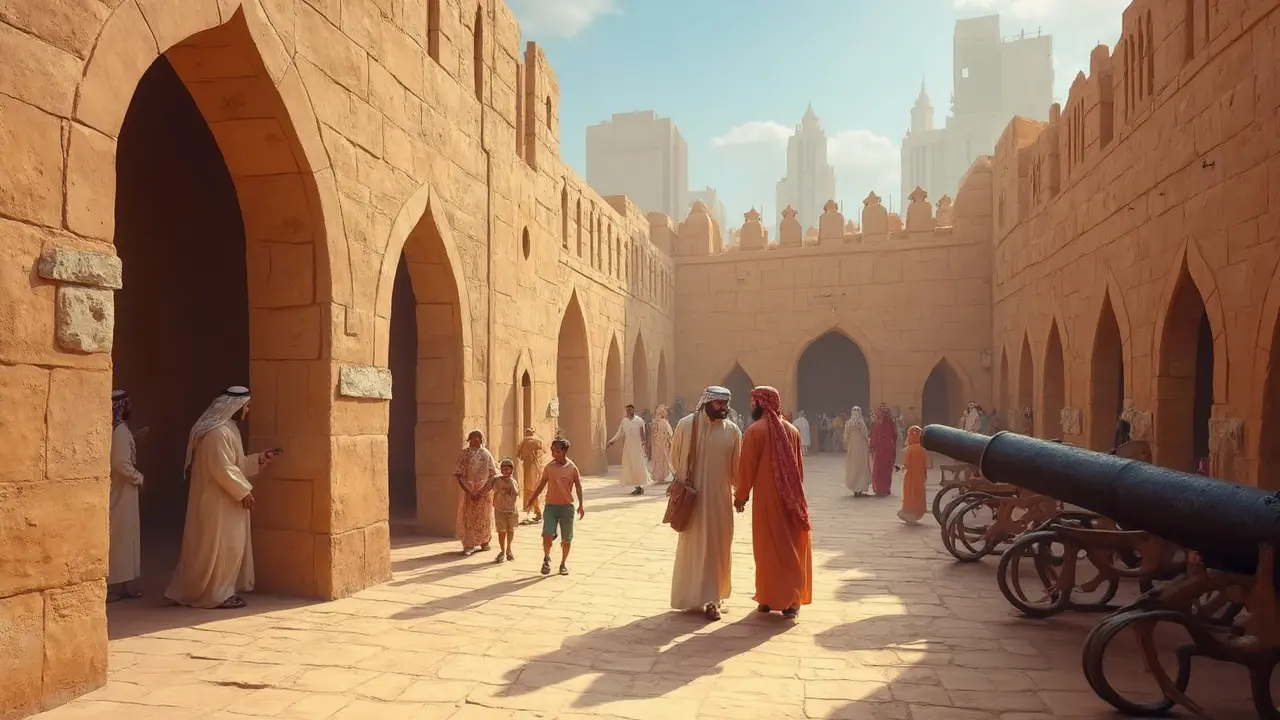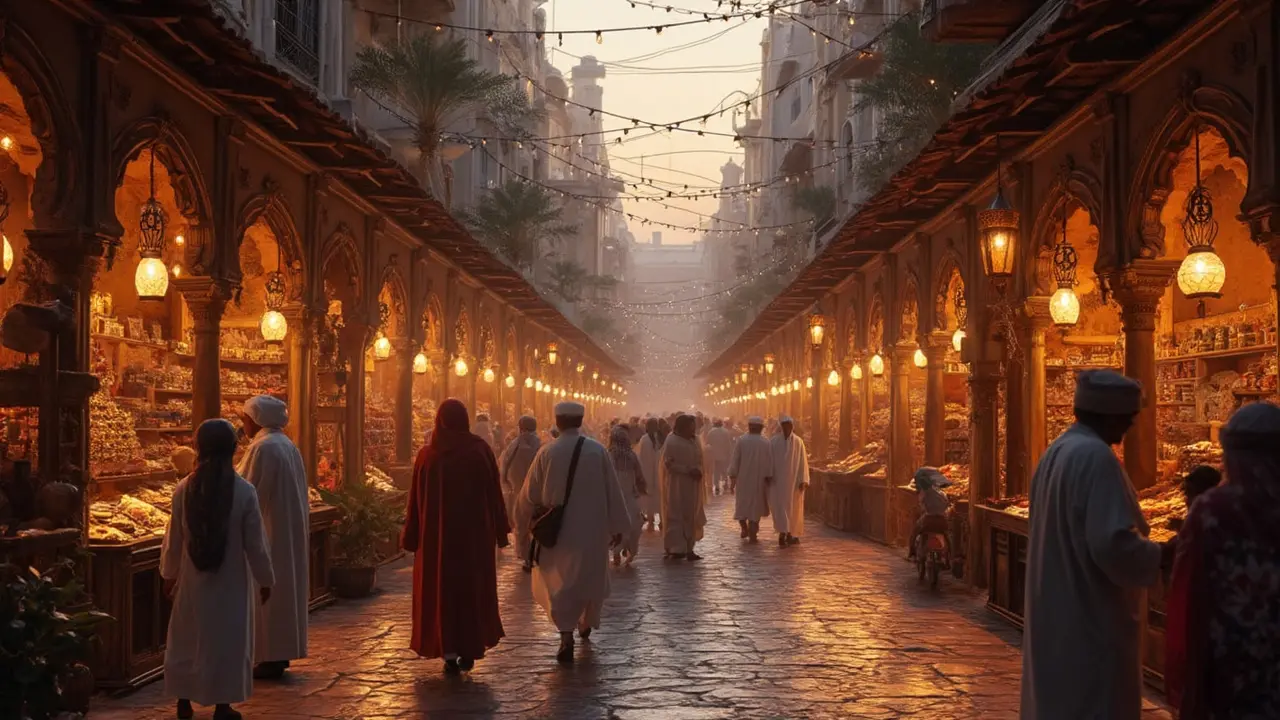
Walking through Dubai, it’s easy to get distracted by glass towers and fancy malls. But right behind all that, you’ll find real windows into the city’s roots—places that show how Dubai went from a fishing village to a global hub. If you’re living here, or even visiting, don’t skip these historical spots. They give real answers to ‘what was Dubai before the Burj Khalifa?’
The best part? These sites are pretty accessible and actually fun to explore. Take Al Fahidi Historical Neighbourhood, for example—it’s a real maze of narrow lanes, coral-walled wind towers, and cozy cafes with majlis-style seating. You’ll want comfy shoes and maybe a camera, because you’ll spot art galleries mixed in with tiny museums and the oldest house in Dubai, turned Arabian Tea House. If you’re bringing kids like I usually do with Elara and Orion, you can join the storytelling hour at Sheikh Mohammed Centre for Cultural Understanding. Ask questions freely—no subject is too weird. You’ll even get to taste local Emirati snacks, like chabab (local pancakes) and dates stuffed with nuts.
- Stepping Into Old Dubai: Al Fahidi and its Secrets
- Unveiling the Ancient Forts and Watchtowers
- Souks and Creek Life: Where History Meets Daily Life
- Beyond the City: Unmissable Heritage Day-Trips
Stepping Into Old Dubai: Al Fahidi and its Secrets
Step off the main roads in Bur Dubai and suddenly you’re in a different world—the Al Fahidi Historical Neighbourhood. This is the oldest part of Dubai still standing, built in the late 1800s. Back then, it was home to Persian merchants who used the natural cooling of wind towers to make life bearable before air conditioning. Now, it’s where locals, tourists, and die-hard history fans come to see what Dubai used to be.
You’ll spot those tall wind towers (called barajeel) sticking up above sand-colored houses. These towers actually work to cool down the rooms naturally. Head to the Dubai Museum (inside the Al Fahidi Fort, built in 1787), and you’ll get floor-by-floor exhibits with wax figures showing old-school pearl diving, daily life, and even a spooky soundscape of the old souk at night.
Want something interactive? The Sheikh Mohammed Centre for Cultural Understanding runs daily walking tours here. They’re famous for their open-door policy—‘Ask us anything’—which is perfect for cultural newbies. The centre is also a safe bet for a real Emirati breakfast, served with lots of stories about traditions you won’t hear in a casual chat at a mall cafe.
If you have kids or just want cool photos, hunt down the quirky street art on the walls tucked between museums. Stop by the Dubai Coffee Museum, where you’ll try beans from the UAE, Ethiopia, and Yemen—yes, there are samples, and yes, it’s all legit. Don’t skip the Coins Museum for weirdly shaped currency from all over the Gulf region.
For planning your trip, here’s a quick comparison of must-see spots and ticket info:
| Spot | What You'll Find | Entry Fee (as of 2025 in AED) |
|---|---|---|
| Dubai Museum (Al Fahidi Fort) | History galleries, old weapons, models of old Dubai | 3 (Adult), 1 (Child) |
| Sheikh Mohammed Centre for Cultural Understanding | Guided tours, culture meals, Q&A with locals | 60-95 (depends on event) |
| Dubai Coffee Museum | Global coffee history, samples, demonstrations | Free |
| Coins Museum | Rare coins from UAE and Gulf | Free |
Getting around Al Fahidi is easy by foot, but if you’re coming by Metro, hop off at Al Fahidi Station and walk five minutes. Want to really fit in? Visit during the Sikka Art Fair every March—it’s packed, but the whole place turns into an arty street party. It’s a slice of the city that goes beyond the skyscrapers—you’ll leave with a fresh angle on Dubai’s roots.
Unveiling the Ancient Forts and Watchtowers
Skip the Instagram filters – if you really want a time-travel vibe in Dubai, go see the actual buildings that protected this city when it was just a small trading port. The Dubai Museum, tucked inside Al Fahidi Fort, is way older than most folks expect. Built in 1787, it’s actually the oldest standing building in Dubai. People used its thick coral walls for protection from invaders, the sun, and sandstorms. The museum now packs in everything from old maps to an actual souk-style display, with wax figures showing pearl divers and fishermen at work. Heads up: Fridays tend to be crowded, so go on a weekday morning if you like your history quiet.
If you’re up for a bit of a trek, Al Fahidi Fort isn’t the only stone-walled story around. Al Ahmadiya School, just across the Creek in Deira, started back in 1912 and helped shape the region’s modern education. It’s close to the Heritage House—a restored pearl merchant home. Best part is, both are free to visit, so you can just drop in for a real taste of how things worked before air-conditioning and smart boards.
For watchtowers, check out Al Bastakiya’s round towers—they were real defense posts. Further out, there’s Al Hisn Fort in Sharjah (about 30 minutes by car), if you fancy a bigger trip outside Dubai proper. At these sites, you’ll see cannons, old wooden doors, and wind towers built for natural cooling. Taking the kids? Make a treasure hunt of spotting the oldest cannon or the quirkiest door knocker.
Insider tip: Museums and forts in Dubai almost all have QR codes or audio guides. Bring headphones, so you don’t miss the deep-dive stories behind every dusty corner. Most places open from 8:30 am to 8:30 pm, but double-check times during Ramadan or public holidays.

Souks and Creek Life: Where History Meets Daily Life
If you want to see the real heartbeat of Dubai, skip the malls and head to the souks near Dubai Creek. This area is all about the kind of hustle and energy that makes Dubai tick, especially before oil changed everything. The Gold Souk, right in Deira, isn’t just for window shopping—it's the largest gold bazaar in the world, and at any time there's roughly ten tons of gold on display. Even if you’re not buying, it’s wild to see rows of glittering necklaces and bangles everywhere you look.
The Spice Souk is just a short walk away, and here, the air hits you with cinnamon, saffron, dried lemons, and rose petals. Vendors actually let you smell and touch everything—don’t feel shy about haggling, that’s part of the experience. My kids always get a kick out of tasting something new or guessing which spice is which. If you’re into cooking, this place is a goldmine for stocking up on the flavors you can’t find in big supermarkets.
Take a ride across the Creek on an abra, the traditional water taxi. It costs just AED 1, and it links the two main hearts of Old Dubai: Bur Dubai and Deira. Locals use this every day, and honestly, you get some of the best skyline views for pocket change. It’s also one of the city’s oldest forms of public transport, running since the 1950s.
If you’re curious about what life was like when the Creek was a trading lifeline, check out the Dubai Museum (in Al Fahidi Fort). Pay attention to the displays about pearl diving—a tough job Dubai was known for before oil. Did you know pearling used to make up around 75% of the local economy back in the 19th century?
Here’s a table with some useful quick info about the area:
| Spot | What to Expect | Best Time to Visit | Current Entry Fee |
|---|---|---|---|
| Gold Souk | Vast gold shops, competitive bargains, busy alleys | Morning or late afternoon | Free / purchase |
| Spice Souk | Aromatic stalls, tasting samples, sellers ready to bargain | Morning | Free / purchase |
| Abra Ride | Local boat ride across Dubai Creek | Any time—sunset is extra special | AED 1 (each way) |
| Dubai Museum | Dioramas, actual archaeological finds, and more | Weekdays, early or late | AED 3 (adults), AED 1 (kids under 6) |
Tip: The souks can get crowded and hot, so drink water and dress light (but modest). For families, strollers work on some paths, but kerbs and steps can make things tricky—baby carriers are easier. If you can, take a guided walking tour (for instance, with Frying Pan Adventures) for the food stories and hidden gems you’ll miss on your own.
Beyond the City: Unmissable Heritage Day-Trips
If you’ve seen all the main sights in Dubai and you’re craving something different, you don’t have to go far to explore even deeper history. There are spots close to the city that will surprise you with their stories and views—and you don’t need to be an adventurer to get there.
First up, head to Al Ain, about 90 minutes away by car. It’s known as the “Garden City” and has some of the oldest finds in the UAE, including Bronze Age tombs at Jebel Hafeet. Al Ain Oasis, a UNESCO World Heritage Site, is super chill for families. You can walk under more than 147,000 date palms while checking out the ancient falaj irrigation system that still runs water through the garden. I always pack snacks for the kids, but you’ll also find small local cafés near the entrance. Al Ain Palace Museum is another must-visit if you want to see where Sheikh Zayed grew up—his personal rooms and majlis are left just like they were decades ago.
Sharjah is even closer, less than an hour from Dubai, and it’s packed with heritage gems. The Heart of Sharjah project has restored traditional souks, coral stone houses, and a neat calligraphy museum. If you want to see what life looked like before oil, check out Souq Al Arsah; it’s shaded, stroller-friendly, and you can get your hands on old Emirati crafts. The Rain Room, while modern, gives a unique twist to the trip and the ticket counter sits inside a restored heritage building. Fridays get quite busy, so try a weekday morning for the easiest experience.
History buffs will love Hatta, up in the Hajar mountains and around 90 minutes out of Dubai. The Hatta Heritage Village is seriously authentic, with restored mud houses, a fort, and village mosques. If you go during the cooler months, Hatta Dam nearby is perfect for kayaking. It’s best to rent a car for flexibility—public transport won’t get you right to these sights.
Here are a few tips for planning these trips from Dubai:
- Check opening times—most heritage sites close midday, especially in summer.
- Pick up a local SIM card if you don’t have UAE data, because Google Maps is your best friend outside the city.
- Bring water and sun protection—yes, even in winter.
- Dress modestly, especially in rural or traditional areas.
When you want to dig past the shiny surface, these spots let you peek into the country’s real roots. They’re close enough for a full day but way more memorable than another mall trip.



